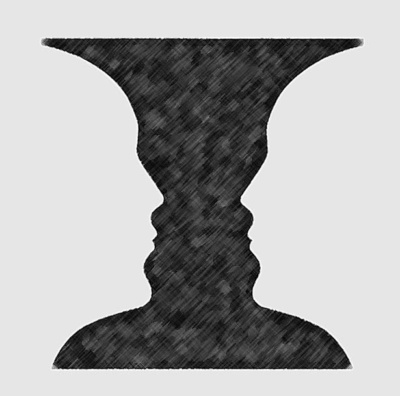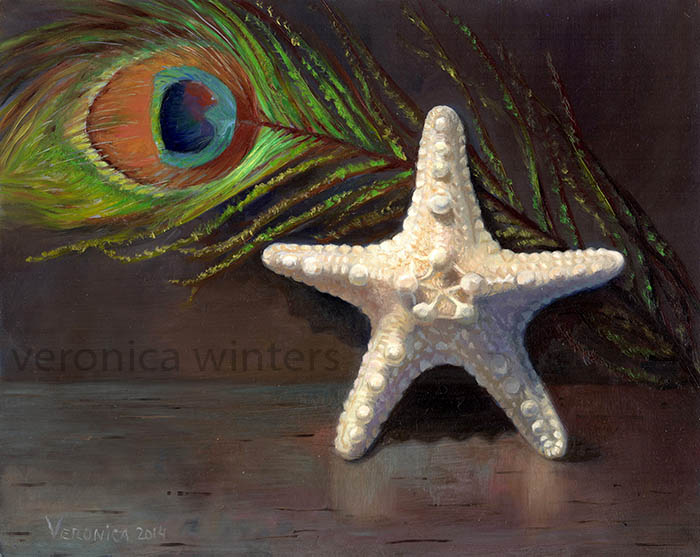Positive And Negative Shapes In Drawing
What is positive and negative space in drawing?
In order to become a better designer of your artwork, you've got to understand the difference between the negative and positive space.
Definition

Look at this picture. What do you see here a black vase or two white profiles? If it's the black vase, you're looking at the positive space. If it's the profiles, you're seeing the negative space. Usually the positive space is the object(s) you draw, and the negative space is the background that surrounds it. Below you see a colored pencil drawing of the flower. The flower itself is the positive space, and the white background around it is the negative space.
Why it's important
The negative space can be an effective tool to define your center of interest. How? Every element in your picture with its edges and shapes is affected by tones and colors placed right next to or around it. So the negative space can balance out your composition visually with a specific tone, shape or a shadow. For instance, in this picture the flower stands out more set against the white background (the negative space). If it were the same value, the flower could have been lost.
One of the most common mistakes beginning artists make, they forget to include their background space into the equation, and ask me what to do with it much later when they are almost done shading the object itself. In my mind I compose the image before I begin drawing. I consider everything: composition, values, textures, and colors not only in the object, but also in the negative space.
1. You can create contrast

2. You can measure and check distances
When you make the outline drawing of your object, you tend to focus on the curving line itself. As a result, the shape might be too long or lopsided, or foreshortened the wrong way. Instead of focusing on the object's curve itself, look at the space between those curves. Artists visually measure distances between the lines, shapes or objects by looking at the negative spaces between them to make the most accurate drawings.
3. Improves drawing accuracy
By focusing on negative shapes that look very abstract to our mind, you can see and copy them with accuracy. It improves the overall accuracy of your drawing. Check out my step-by-step tutorials here: step by step tutorials page.
Basic art supplies I often use:
- Transfer paper: white transfer paper: https://amzn.to/3gAaPFo or https://amzn.to/2XMdBPg
- Panels: Ampersand pastelbord: https://amzn.to/2A99THg
- Mono eraser: https://amzn.to/3e6SHRw
- Kneaded eraser: https://amzn.to/3gaZWtH
- Colored Pencils: Prismacolor 36: https://amzn.to/2LUheNS | Pablo 30: https://amzn.to/2A2UhFk | Polychromos: https://www.kqzyfj.com/click-9265447-13717235?url=https%3A%2F%2Fwww.dickblick.com%2Fproducts%2Ffaber-castell-polychromos-pencils%2F%3FclickTracking%3Dtrue%26wmcp%3Dpla%26wmcid%3Ditems%26wmckw%3D20561-0369&cjsku=20561-0369
- Drawing paper: Colored paper. You must pick the SMOOTH SIDE to draw on this one: https://amzn.to/2yr59wf and https://amzn.to/2Xn0pAr | On Amazon Canson colorline, clementine hue: https://amzn.to/3bUkUJP , On Amazon Canson colorline, turquoise: https://amzn.to/3d0MQwU | At Dick Blick Canson colorline (a wide selection): https://www.tkqlhce.com/click-9265447-13717235?url=https%3A%2F%2Fwww.dickblick.com%2Fproducts%2Fcanson-colorline-art-papers%2F%3FclickTracking%3Dtrue%26wmcp%3Dpla%26wmcid%3Ditems%26wmckw%3D11273-5232&cjsku=11273-5232
- Spray varnish for drawings: https://amzn.to/2X0GEzL | DON'T buy krylon spray!
- Blender: https://amzn.to/2ZMvgsW
I'm an Amazon affiliate.
Positive And Negative Shapes In Drawing
Source: http://veronicasart.com/what-is-positive-and-negative-space-in-drawing/
Posted by: kingfortsmaper.blogspot.com

0 Response to "Positive And Negative Shapes In Drawing"
Post a Comment